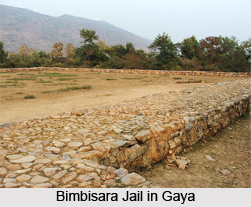 History of Gaya gives the detailed information on the mythological era, the ancient Indian civilisation, the Sixteen Mahajanapadas, and the Muslim era which is the main cause of its decline.
History of Gaya gives the detailed information on the mythological era, the ancient Indian civilisation, the Sixteen Mahajanapadas, and the Muslim era which is the main cause of its decline.
Mythological History of Gaya
The name of Gaya is mentioned in the great epics like Ramayana and Mahabharata. Lord Rama along with Sita and Lakshmana visited Gaya for offering pind-daan to their father Dasharath. In Mahabharata, the place has been identified as Gayapuri. About the origin of the name "Gaya` as referred to in Vayu Purana is that Gaya was the name of a demon whose body was pious after he performed rigid penance and secured blessings from Lord Vishnu. It was said that the Gayasura`s body would continue to be known as Gaya Kshetra. Now this place is one of the sacred tourist spots for pilgrimage tourism.
Early History of Gaya
Gaya has experienced the rise and decline of many Hindu dynasties. In the early era, Gaya is known as Magadh Region. From the 6th century BC to the 18th century AD, about 2300-2400 years, Gaya has been occupying an important place in the cultural history of the region. It opened up with the Sishunaga dynasty founded by Sisunaga, who exercised power over Patna and Gaya around 600 BC. Bimbisara had projected Gaya and marked this modern city in history of Indian civilisation. Later with the hands of Ashoka, and Samudragupta, Gaya became the place of administration after Pataliputra.
Medieval History of Gaya
Gaya has the slow decline in Pala Dynasty, but Buddhism has preached in Gaya and the Mahabodhi temple of Bodh Gaya was built during the reign of Dharmapala, son of Gopala, the first ruler of Pala Kings lineage. In 12th century, Gaya was invaded by Muhammad Bakhtiyar Khilji. The city was brutally plundered and the Nalanda, the seat of Buddhism was tarnished and had a huge decline.
Modern History of Gaya
The city Gaya in modern history emerged during British Government in India with the part of Behar and Ramgarh. It happened till 1864. It was given the status of independent district in 1865. Subsequently, in May 1981, Magadha was created by the Bihar State Government with Gaya District, Nawada District, Aurangabad and Jehanabad. The city of Gya fell in Gaya District. Gaya has seen three districts partitioned off from its territory Aurangabad and Nawada in 1976, and Jehanabad in 1988.



















